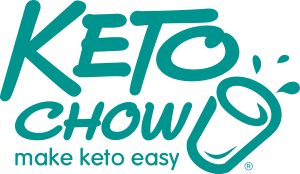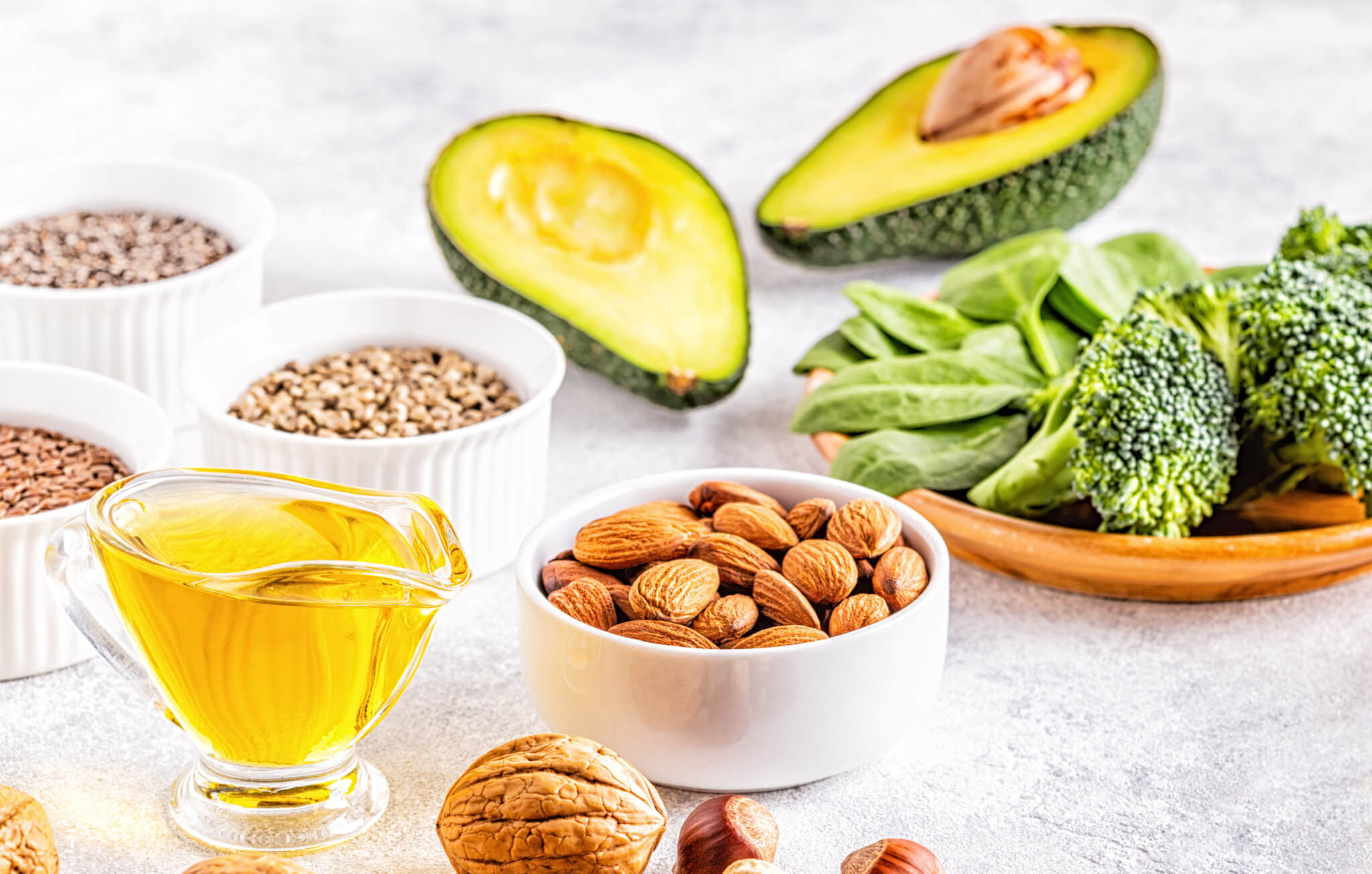So, you’re eating keto and you want to go vegetarian or vegan? Or you’re already mostly plant-based and you’re wondering if you can lower your carbs and enjoy the benefits of a ketogenic way of eating while staying that way. Good news: you absolutely can!
Eating a healthy ketogenic and plant-based diet does take some planning and creativity but it can be done. As always, the best way to approach it is by focusing on nutrient-dense, quality foods. It is relatively simple to plan a nutritious and convenient vegetarian ketogenic diet, but a vegan ketogenic diet takes extra planning and may require more flexibility in terms of the amount of carbohydrates that will be included, since most plant foods contain some amount of carbohydrates.
Before we continue, remember as always to seek the advice of a qualified health professional before making significant changes to your diet, especially if you plan to restrict more than one type of food.
Fat is the foundational component of a keto diet, so finding good sources of veg-friendly fats is the first order of business. Luckily there are plenty of healthy options to choose from. Vegetarian diets can include dairy products like butter and cream while vegan diets rely solely on plant-derived fats like coconut cream, olive oil, and sesame tahini.
- Butter, ghee, heavy cream, sour cream, crème fraiche, clotted cream, and more are dairy fats that are all good for a keto diet. Dairy products can contain some carbs, so remember to check labels. Ghee and clarified butter are pure butter fat which should not contain any carbs and are also generally safe for those who are lactose intolerant. Look for sheep’s milk and goat’s milk butter at specialty grocers and farmer’s markets as well.
- Coconut oil, cream, and butter are excellent vegan keto fats that can be used in every application from smoothies, soups, and curries, to baked goods. Unrefined coconut oil has a rich coconut flavor while refined coconut oil has a mild, neutral flavor. Coconut cream and butter have some carbohydrates so read the labels for serving sizes and carb counts.
- Avocado oil is a neutral oil that works well for frying and baking.
- Olive oil is very traditional and surprisingly versatile.
- Cocoa butter can be used for making vegan baked goods, fat bombs, and frostings but it can be a bit tricky to work with. Start with small amounts while you get the hang of it.
- Nut oils and butters come in a wide array. Look for walnut, pecan, and macadamia oils for salad dressings, sauces, and dips. Almond butter and cashew butter are great for snacks and baked goods.
- Seed oils and butters are a delicious way to get good fats in your diet, especially if you have nut allergies. We’re not talking about the much-maligned commercial seed oils like canola oil or vegetable oil here. Look for naturally produced, traditional butters and oils like sesame tahini, sunflower seed butter, hemp butter, toasted sesame oil, flax seed oil, and pumpkin seed oil. Use seed butters in dips, baked goods, salad dressings, and more. Most seed oils are best used for finishing dishes, or in sauces and dressings. They have a rich flavor and don’t take a lot of heat.
- Vegan butter replacements are becoming widely available at grocery stores. Some of them are just water and cheap oil with flavoring and coloring agents added (in other words: margarine). But some butter replacements are made with coconut oil, nut milks and live cultures. They offer good food quality and taste delicious. Read labels, do your homework, and find one that works for you.
Protein is the second building block of a ketogenic diet. Vegetarians can include eggs and dairy in their meals. Vegans can use nuts, seeds, soy foods, and plant-based protein supplements to meet their needs. We recommend as always doing your research on what supplements will work for you, in consultation with healthcare professionals. We also recommend getting blood tests periodically to check your levels.
- The majority of Keto Chow flavors are made with vegetarian-friendly milk protein, and a full meal’s worth of vitamins and minerals. (The exceptions are Beef Soup Base, Creamy Tomato Basil, and Spicy Taco Soup, which use beef protein and powdered bone broth.) Not only does Keto Chow provide a nutritious meal on its own, but it can also be used in all sorts of keto recipes.
- Eggs are a power packed keto staple. They offer a great balance of healthy fat and high-quality protein. Chicken eggs are the most widely available but duck eggs, turkey eggs, goose eggs, and quail’s eggs may be available seasonally as well.
- Cheeses made from cow’s milk, goat’s milk, sheep’s milk and buffalo milk offer protein, calcium, and fat. There are many kinds of cheese to choose from but keep in mind that the longer cheeses are aged, the lower their carbohydrate count is in general. Some cheeses are prepared with animal-based rennet and are not appropriate for vegetarians. Look for cheeses made with vegetable rennet or an acid like ricotta or cottage cheese.
- Black soybeans are relatively low in carbohydrates, and high in fat and protein, making them a great option for keto diets. They can be purchased dry or canned for added convenience. Use them in any dish where you would use beans.
- Tofu is high in protein and mild in flavor. It comes in different levels of firmness and can be used in many ways. It is an incredibly versatile food and quite low in carbohydrates. Also look for Yuba or dried tofu skin (sold dried or fresh), a delicious, chewy form of soybean protein that can be prepared in many ways.
- Tempeh is a cultured soybean cake that has a hearty texture and a nutty flavor. It can be used and holds up well to simmering, marinating, grilling, and frying. It is made from the whole soybean, so it has more carbohydrate content than tofu, but it is a great source of vitamins and minerals. Tempeh is higher in carbohydrates than tofu, but it is just as nutritious, filling, and high in fiber since the entire bean is used. It is an especially useful protein in a vegan diet because of its high food value.
- Seitan, or wheat meat as it is sometimes called, is a firm textured, hearty, wheat-based protein. It is usually simmered in a flavored broth and can be shaped into patties, sausages, and more. Please be aware the only ingredient in seitan is wheat gluten which means it should never be served to someone with celiac disease or a gluten sensitivity.
- There is a wide array of vegan “cheese” now available commercially. Some are made from nuts, coconut, and soy and can be valuable additions to a vegan way of eating. Some are made from inexpensive high-carb, starches, and low quality oils and have very little food value. Read labels and nutrition information and make educated decisions about what will work for you.
- Nuts and seeds can be valuable sources of protein in plant based diets as well.
- Nutritional yeast is a flavorful ingredient popular among vegans that offers protein, vitamins, and minerals. It can be used to add a savory or cheesy flavor to dairy-free dishes.
- Meat replacements are readily available on the market–some new, and some that have been around for decades. The same advice applies here: do your research. They come in varying degrees of quality, so it is important to read all of the ingredients and the nutrition information. Some of them are quite high in carbohydrates and/or have very little food value.
As with any keto diet, the carbohydrates in your diet will come from low-starch plants. Low-carb fruits and vegetables offer fiber, hydration, and a host of vitamins and minerals–not to mention variety in color, texture, and flavor to keep things interesting. Below are just some of the fruits and vegetables you can enjoy on your keto journey.
- Mushrooms (wild button mushrooms, porcini mushrooms, shiitake, portobello, enoki, oyster, etc.)
- Leafy greens like Swiss chard, collard greens, kale, turnip greens, bok choy, and spinach
- Bitter greens like chicory, escarole, and endive
- Fresh lettuces including romaine, red leaf, iceberg, green leaf
- Cabbage (red, green, and napa)
- Non-starchy root vegetables including turnips, rutabaga, celery root, kohlrabi, radishes, and jicama
- Cucumbers, yellow squash, zucchini, and bitter gourd
- Peppers (hot and sweet jalapenos, Hungarian, bell peppers, Italian frying, serrano, poblano, and habanero)
- Green onions, leeks, white onions, red onions, yellow onions, and garlic
- Okra, chayote
- Broccoli, cauliflower, broccoli rabe, and Brussels sprouts
- Blackberries, strawberries, raspberries, blueberries
- Lemons and limes
- Ginger and turmeric
- Fresh avocados
- Fermented vegetables and pickles including kimchi, sauerkraut, and kosher dill pickles.
Pantry items that are great to have on hand in a plant based kitchen:
- Sea vegetables such dried kelp, dulse, nori, and wakame
- Flax seed, chia seed, hemp seed
- Dried mushrooms
- Vegetable broth or bouillon
- Coconut aminos or soy-based aminos









Leave A Comment